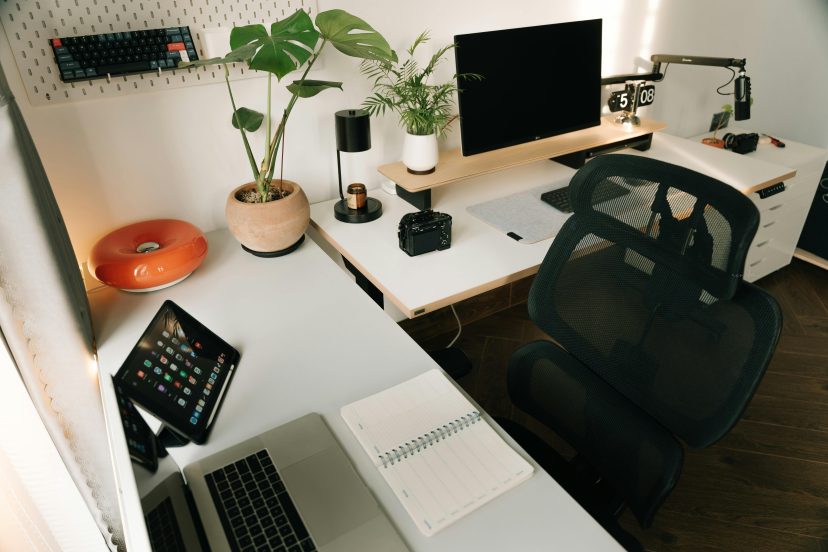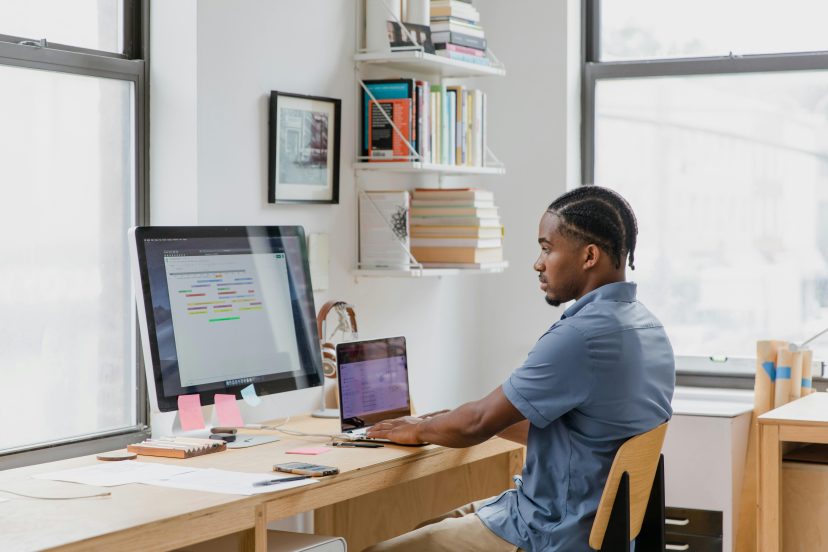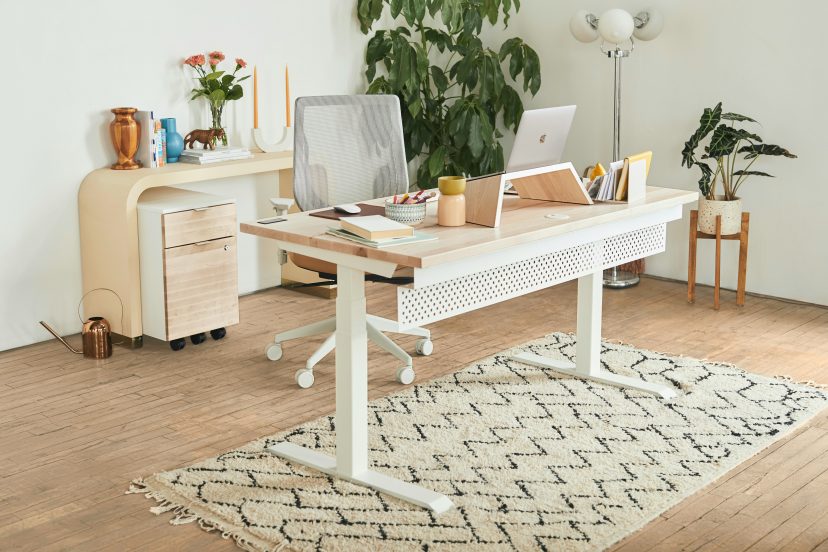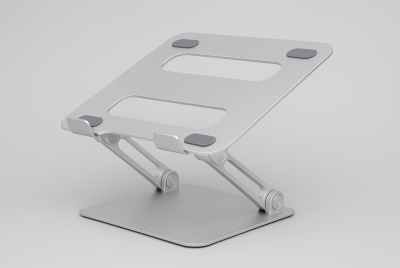10 Ergonomic Desk Accessories for a Healthy Work Setup
We may earn a commission for purchases made using our links. Please see our disclosure to learn more.
If you’ve ever wrapped up a long workday with sore shoulders, a tight neck, or tired eyes, you already know the price of a poor workspace setup. Hours spent sitting, slouching, or typing at awkward angles can quietly wear down your body over time. Investing in ergonomic desk accessories can help you work smarter and healthier. These tools aren’t just trendy office add-ons—they’re designed to improve posture, reduce strain, and enhance overall comfort. Let’s explore ten must-have accessories that can help you create a healthier, more productive work setup.
What Are the Benefits of a Healthy Work Setup?
A few small changes to your workspace can completely change how you feel at the end of the day—and research backs that up. In a 2024 study published in Applied Ergonomics, office employees who used sit-stand desks along with posture education and gentle movement prompts reported less muscle discomfort and fatigue after six months. Simply standing more often and being mindful of posture helped them feel more comfortable and focused throughout the day.
Interestingly, another study published in Applied Ergonomics (2015) looked at people with carpal tunnel syndrome using different mouse designs and wrist supports. Researchers found that while vertical mice and ergonomic mouse pads changed wrist position and improved posture, they didn’t actually reduce carpal tunnel pressure. In other words, these tools can help your wrists rest more naturally, but they aren’t a medical fix for existing nerve compression—they’re best used for prevention and everyday comfort.
Together, these studies highlight a simple truth: a healthy workspace isn’t just about gadgets; it’s about combining smart tools with mindful habits. The right setup helps you stay comfortable, move more often, and protect your long-term well-being while you work.

10 Essential Ergonomic Desk Accessories
1. Adjustable Laptop Stand
Laptops are convenient, but their low screens can cause you to hunch forward, straining your neck and shoulders. An adjustable laptop stand raises your screen to eye level, helping align your spine and reduce discomfort. It encourages better posture, keeps your head upright, and relieves tension in your upper body. The result is improved focus and less fatigue, even during long hours of work. Pair it with an external keyboard and mouse for a perfectly balanced ergonomic setup.
2. Ergonomic Keyboard
A flat keyboard forces your wrists into unnatural angles, leading to tension and strain over time. An ergonomic keyboard is shaped to follow the natural curve of your hands, keeping your wrists straight while you type. It encourages proper arm and shoulder alignment, which helps prevent repetitive strain injuries. You’ll notice smoother, more comfortable typing and fewer aches by the end of the day. Adding a cushioned wrist rest can enhance support and reduce pressure even further.
3. Vertical Mouse
A vertical mouse allows your hand to rest in a neutral “handshake” position rather than twisting flat against the desk. This posture reduces strain on the wrist and forearm muscles, making it ideal for long computer sessions. It helps improve blood flow and can minimize discomfort associated with repetitive mouse use. While it might feel unusual at first, most users quickly adjust to its natural grip. Over time, you’ll notice less wrist tension and smoother, more relaxed movement.
4. Monitor Arm
Your monitor’s position plays a huge role in your posture and comfort level. A monitor arm makes it easy to fine-tune your screen’s height, distance, and viewing angle for optimal comfort. Keeping your monitor at eye level prevents forward head tilt and reduces neck and shoulder strain. It also clears up valuable desk space, giving your workstation a more organized and professional look. Small adjustments like these can significantly improve both comfort and focus.
5. Footrest
If your feet dangle while sitting, it can put pressure on your thighs and lower back. A footrest provides stable support, helping you maintain a comfortable 90-degree angle at your knees. It encourages proper posture by reducing leg fatigue and improving circulation. Subtle rocking or repositioning throughout the day keeps your muscles active and prevents stiffness. This small accessory can make a big difference in how refreshed your legs feel after work.
6. Ergonomic Desk Chair with Lumbar Support
A good chair is essential for maintaining posture and productivity. An ergonomic chair supports the natural curve of your spine and keeps your back properly aligned. Adjustable lumbar support, armrests, and seat height allow you to customize the fit to your body. This flexibility reduces pressure points and helps prevent lower back pain during long work sessions. Investing in a supportive chair pays off in comfort, focus, and long-term health.
7. Desk Mat or Wrist Rest
Typing and scrolling can create repetitive stress on your wrists and forearms. A desk mat or wrist rest cushions these areas, keeping your hands in a neutral, relaxed position. It helps reduce friction between your wrists and the desk, preventing strain and irritation. The extra padding also adds comfort during extended work periods. Plus, a full desk mat gives your workspace a clean, professional look while protecting your desk surface.
8. Adjustable Standing Desk Converter
Sitting for too long can cause stiffness and fatigue, but alternating between sitting and standing helps keep your body active. A standing desk converter allows you to lift your monitor and keyboard to a standing height easily. This flexibility improves blood flow, reduces back strain, and boosts energy levels throughout the day. It also encourages movement, helping combat the effects of prolonged sitting. Begin by standing for brief periods and slowly extend the time as your body becomes accustomed to it.
9. Cable Management Kit
Tangled cables can create visual clutter and make your workspace feel chaotic. A cable management kit keeps cords organized, helping you maintain a clean and distraction-free environment. It reduces the risk of tripping or pulling on devices accidentally. A tidy desk also improves focus and gives your workspace a polished, professional look. Keeping your cords under control is a simple but powerful way to enhance both safety and productivity.
10. Blue Light Blocking Lamp or Screen Filter
Staring at screens for long hours can strain your eyes and disrupt your sleep cycle. A blue light blocking lamp or screen filter helps reduce glare and soften harsh lighting. These tools make it easier to focus without squinting or eye fatigue. Adjustable lamps allow you to change brightness and color temperature to suit different times of day. Combined with regular screen breaks, they help protect your eyes and improve overall comfort.

Posture at Work: The Foundation of Ergonomics
Good posture isn’t just about looking professional — it’s the base of ergonomic health. Every small adjustment, from how you sit to where your screen is placed, affects how your body feels. When you sit tall with your shoulders relaxed and your back supported, your muscles don’t have to overcompensate. Your joints align naturally, and your breathing becomes deeper and steadier, helping you stay calm and alert.
Poor posture, on the other hand, silently strains your neck, shoulders, and lower back. Over time, that strain can lead to fatigue, discomfort, and even long-term injury. The goal of ergonomics is simple: make your workspace fit you. The more naturally you move, the less effort your body has to make — and the more energy you save for the work that truly matters.
The Ergonomic Workstation Setup Checklist
Use this checklist to fine-tune your workspace and build healthier habits. For a more detailed guide on desk alignment, posture, and comfort adjustments, check out these desk setup ideas for expert recommendations.
Chair:
- Adjust your chair height so both feet sit comfortably flat on the ground.
- Keep your knees at a 90° angle.
- Support your lower back with firm lumbar padding.
Desk:
- Ensure your elbows stay close to your body.
- Make sure your forearms stay level with your desk surface.
- Maintain a small gap (about 2–3 inches) between the front edge of your seat and your knees.
Monitor:
- Position your monitor so the top edge lines up roughly with your eye level.
- Keep the screen about an arm’s distance away from where you sit.
- Angle the monitor slightly upward to help minimize glare.

Keyboard and Mouse:
- Maintain straight, relaxed wrists while typing or using your mouse.
- Position them so your arms don’t reach forward.
- Consider an ergonomic keyboard or vertical mouse for comfort.
Lighting and Ambience:
- Use soft, indirect lighting to prevent eye strain.
- Keep your workspace tidy and clutter-free to promote focus and calm.
Movement:
- Take mini breaks every 30 to 45 minutes to reset your body.
- Stand, stretch, or walk briefly to release tension and improve circulation.
- Every 20 minutes, glance at an object roughly 20 feet away and focus on it for 20 seconds to refresh your eyes.
Conclusion
A healthy workspace doesn’t have to be complicated. Start with one or two changes — maybe a laptop stand or a better chair — and notice how your body responds. Remember, the objective isn’t flawless posture—it’s comfort, awareness, and the right ergonomic desk accessories. When your desk setup supports you properly, you’ll find yourself working more efficiently, feeling more focused, and ending each day with less tension. Ergonomics isn’t a luxury — it’s a long-term investment in your health, happiness, and productivity.
FAQs
1. What are ergonomic desk accessories?
They’re tools designed to improve posture, reduce strain, and increase comfort — such as monitor arms, laptop stands, or supportive chairs.
2. Are ergonomic desk accessories really worth it?
Yes. They can reduce discomfort, prevent injuries, and enhance focus and energy throughout the day.
3. What’s the best accessory to start with?
A good chair or monitor adjustment makes the biggest immediate difference.
4. How long will it take for me to see the effects?
Many people notice improvement in comfort and posture within a few days of adjusting their setup.
5. How can I keep good posture throughout the workday?
Set reminders to check your posture every hour, stretch your shoulders and wrists, and adjust your chair or monitor if you notice slouching. Small, consistent movements help prevent stiffness and keep your body aligned naturally.




